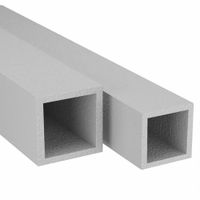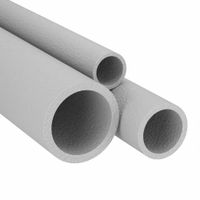Call +(254) 703 030 000 / 751 483 999 / 721 704 777
.....Read More
Frequently Asked Questions
What is fiberglass and how is it made?
Fiberglass is a composite material made from fine fibers of glass. It is known for its strength, lightweight properties, and resistance to corrosion, making it a popular choice in various industries, including automotive, aerospace, and construction.
The production of fiberglass involves several steps:
1. **Raw Materials**: The primary raw materials for fiberglass are silica sand, limestone, soda ash, and other minerals. These materials are melted together in a furnace at high temperatures to form molten glass.
2. **Fiber Formation**: The molten glass is then extruded through fine holes in a bushing, creating thin strands of glass fibers. These fibers are rapidly cooled and solidified as they emerge.
3. **Sizing Application**: The glass fibers are coated with a chemical solution known as sizing. This coating helps protect the fibers, enhances their bonding with resins, and improves their handling properties.
4. **Gathering and Winding**: The fibers are gathered into strands and wound onto spools. These spools can be used directly or further processed into various forms such as mats, woven fabrics, or chopped strands.
5. **Composite Formation**: To create fiberglass-reinforced products, the glass fibers are combined with a resin matrix, typically polyester, epoxy, or vinyl ester. The resin binds the fibers together, providing additional strength and rigidity.
6. **Curing**: The composite material is shaped and then cured, often using heat or chemical catalysts, to harden the resin and lock the fibers in place.
Fiberglass is valued for its versatility, being used in products ranging from insulation and boat hulls to sports equipment and roofing materials. Its ability to be molded into complex shapes while maintaining structural integrity makes it a preferred material in many applications.
What are the advantages of using fiberglass over metal or wood?
Fiberglass offers several advantages over metal and wood:
1. **Corrosion Resistance**: Unlike metal, fiberglass does not rust or corrode, making it ideal for use in environments exposed to moisture, chemicals, or saltwater.
2. **Lightweight**: Fiberglass is significantly lighter than metal, which can reduce transportation costs and make handling and installation easier.
3. **Strength-to-Weight Ratio**: Fiberglass provides a high strength-to-weight ratio, offering durability and robustness without the added weight of metal.
4. **Low Maintenance**: Fiberglass requires minimal maintenance compared to wood, which can rot, or metal, which can rust. It does not need regular painting or sealing.
5. **Thermal Insulation**: Fiberglass has better thermal insulation properties than metal, making it more energy-efficient in applications like building construction.
6. **Electrical Insulation**: Fiberglass is a non-conductor of electricity, providing safety advantages in electrical applications.
7. **Design Flexibility**: It can be molded into complex shapes and sizes, offering more design flexibility than wood or metal.
8. **Weather Resistance**: Fiberglass withstands extreme weather conditions better than wood, which can warp or swell, and metal, which can expand or contract.
9. **Cost-Effectiveness**: Over time, the durability and low maintenance of fiberglass can lead to cost savings compared to the upkeep required for wood or metal.
10. **Non-Magnetic**: Fiberglass is non-magnetic, making it suitable for applications where magnetic interference is a concern.
11. **Aesthetic Versatility**: It can be produced in a variety of colors and finishes, offering aesthetic versatility without the need for additional treatments.
12. **Environmental Impact**: Fiberglass production can be more environmentally friendly, as it often involves less energy consumption compared to metal processing.
These advantages make fiberglass a preferred material in industries such as construction, automotive, marine, and aerospace.
How strong is fiberglass compared to other materials?
Fiberglass is a composite material made from fine glass fibers and a resin matrix, typically polyester, vinyl ester, or epoxy. Its strength is characterized by a combination of tensile strength, compressive strength, and impact resistance.
Compared to metals like steel and aluminum, fiberglass has a lower tensile strength, typically ranging from 345 to 1,035 MPa, whereas steel can exceed 2,000 MPa. However, fiberglass is significantly lighter, offering a high strength-to-weight ratio, which is advantageous in applications where weight is a critical factor, such as in automotive and aerospace industries.
Fiberglass is also more flexible than metals, allowing it to absorb impacts better without permanent deformation. This makes it suitable for applications requiring energy absorption, like helmets and car body panels. However, it is less impact-resistant than carbon fiber, another composite material, which is stronger and stiffer but also more expensive.
Compared to wood, fiberglass is more durable and resistant to environmental factors such as moisture, rot, and insects. It maintains its structural integrity over time, making it ideal for marine applications like boat hulls.
In comparison to plastics, fiberglass is generally stronger and more heat-resistant, making it suitable for applications requiring higher mechanical performance and thermal stability.
Overall, fiberglass offers a balance of strength, weight, and cost, making it a versatile material for a wide range of applications. However, it is not as strong as some advanced composites like carbon fiber or as tough as metals like steel, but its advantages in weight and corrosion resistance make it a preferred choice in many industries.
What are the common applications of fiberglass tubes?
Fiberglass tubes are widely used across various industries due to their strength, lightweight nature, and resistance to corrosion. Common applications include:
1. **Construction**: Used in structural components, fiberglass tubes provide support in building frameworks, bridges, and roofing systems due to their durability and resistance to environmental factors.
2. **Electrical**: In the electrical industry, fiberglass tubes serve as insulators and protective conduits for wiring and cables, offering excellent dielectric properties and resistance to heat and fire.
3. **Telecommunications**: They are used in the construction of antenna masts and towers, providing a lightweight and non-conductive solution that withstands harsh weather conditions.
4. **Marine**: In marine applications, fiberglass tubes are used in the construction of boat hulls, masts, and other components due to their resistance to saltwater corrosion and lightweight nature.
5. **Automotive and Aerospace**: These tubes are employed in the manufacturing of vehicle components, such as chassis and body panels, as well as in aircraft structures, where weight reduction is crucial for performance and fuel efficiency.
6. **Sports and Recreation**: Fiberglass tubes are used in the production of sports equipment, such as fishing rods, tent poles, and archery bows, offering flexibility and strength.
7. **Industrial**: In industrial settings, they are used for piping systems, chemical processing equipment, and as rollers in conveyor systems, benefiting from their chemical resistance and mechanical strength.
8. **Renewable Energy**: In wind energy, fiberglass tubes are used in the construction of wind turbine blades, providing the necessary strength and flexibility to withstand high winds.
9. **Medical**: In the medical field, they are used in the production of prosthetics and medical devices, offering a lightweight and durable solution.
These applications highlight the versatility and adaptability of fiberglass tubes across different sectors.
How does fiberglass withstand chemicals and corrosion?
Fiberglass withstands chemicals and corrosion primarily due to its composition and structure. It is made from fine fibers of glass, which are inherently resistant to many chemicals and do not corrode like metals. The glass fibers are embedded in a resin matrix, typically polyester, vinyl ester, or epoxy, which provides additional chemical resistance and structural integrity.
The glass fibers themselves are inert and non-reactive, which means they do not undergo chemical reactions with most substances. This makes them resistant to a wide range of chemicals, including acids, bases, and solvents. The choice of resin is crucial, as different resins offer varying levels of resistance to specific chemicals. For instance, vinyl ester resins are often chosen for environments with high chemical exposure due to their superior resistance to acids and alkalis compared to polyester resins.
The structure of fiberglass also contributes to its durability. The fibers are woven or arranged in a way that distributes stress and prevents the propagation of cracks, which can be initiated by chemical attack. This structural integrity helps maintain the material's strength and performance over time, even in harsh environments.
Additionally, fiberglass can be engineered with specific coatings or additives to enhance its chemical resistance further. These coatings can provide a barrier that prevents chemicals from reaching the fibers and resin, thereby extending the lifespan of the material in corrosive environments.
Overall, the combination of inert glass fibers, chemically resistant resins, and potential protective coatings allows fiberglass to effectively withstand chemicals and corrosion, making it a preferred material in industries such as chemical processing, marine, and construction.
Is fiberglass safe to use and handle?
Fiberglass is generally considered safe to use and handle when proper precautions are taken. It is a synthetic material made from fine fibers of glass and is commonly used for insulation, roofing, and various industrial applications. However, handling fiberglass can pose certain health risks if safety measures are not followed.
When fiberglass is cut, sanded, or disturbed, it can release tiny glass fibers into the air. These fibers can cause skin irritation, itching, and rashes upon contact. To prevent this, it is advisable to wear protective clothing, such as long sleeves, gloves, and goggles, to minimize skin exposure.
Inhalation of fiberglass particles can also irritate the respiratory system, leading to coughing, sore throat, or temporary breathing difficulties. To mitigate these risks, wearing a dust mask or respirator is recommended, especially in poorly ventilated areas or during activities that generate dust.
Fiberglass is not classified as a carcinogen by major health organizations, but prolonged exposure to high concentrations of airborne fibers should be avoided. Proper ventilation and dust control measures can help reduce airborne fiber levels.
For eye protection, safety goggles should be worn to prevent fibers from entering the eyes, which can cause irritation or injury.
In summary, fiberglass is safe to use and handle with appropriate safety precautions. Wearing protective clothing, using respiratory protection, and ensuring good ventilation are key measures to minimize health risks associated with fiberglass exposure. Always follow manufacturer guidelines and safety data sheets for specific handling instructions.
How do you cut and shape fiberglass tubes for construction purposes?
To cut and shape fiberglass tubes for construction purposes, follow these steps:
1. **Safety Precautions**: Wear protective gear, including gloves, goggles, and a dust mask, to protect against fiberglass dust and sharp edges.
2. **Measuring and Marking**: Use a measuring tape to determine the required length and a marker to mark the cut line on the tube. Ensure accuracy to avoid material wastage.
3. **Cutting Tools**: Choose the appropriate cutting tool based on the tube's thickness and diameter. Common tools include a hacksaw, circular saw with a diamond or carbide blade, or a band saw. For precision, a miter saw with a fine-toothed blade can be used.
4. **Cutting Process**: Secure the tube in a vise or with clamps to prevent movement. Cut along the marked line with steady, even pressure. Avoid forcing the blade, as this can cause splintering.
5. **Sanding and Smoothing**: After cutting, use sandpaper or a sanding block to smooth the edges and remove any burrs. Start with a coarse grit and progress to a finer grit for a smooth finish.
6. **Shaping**: For shaping, use a file, rasp, or rotary tool with a sanding attachment. Gradually shape the tube to the desired contour, checking frequently against templates or measurements.
7. **Cleaning**: Wipe the tube with a damp cloth to remove dust and debris. Ensure the work area is clean to prevent inhalation of fiberglass particles.
8. **Final Inspection**: Check the cut and shaped tube for accuracy and smoothness. Make any necessary adjustments before proceeding with construction.
By following these steps, fiberglass tubes can be effectively cut and shaped for various construction applications.

